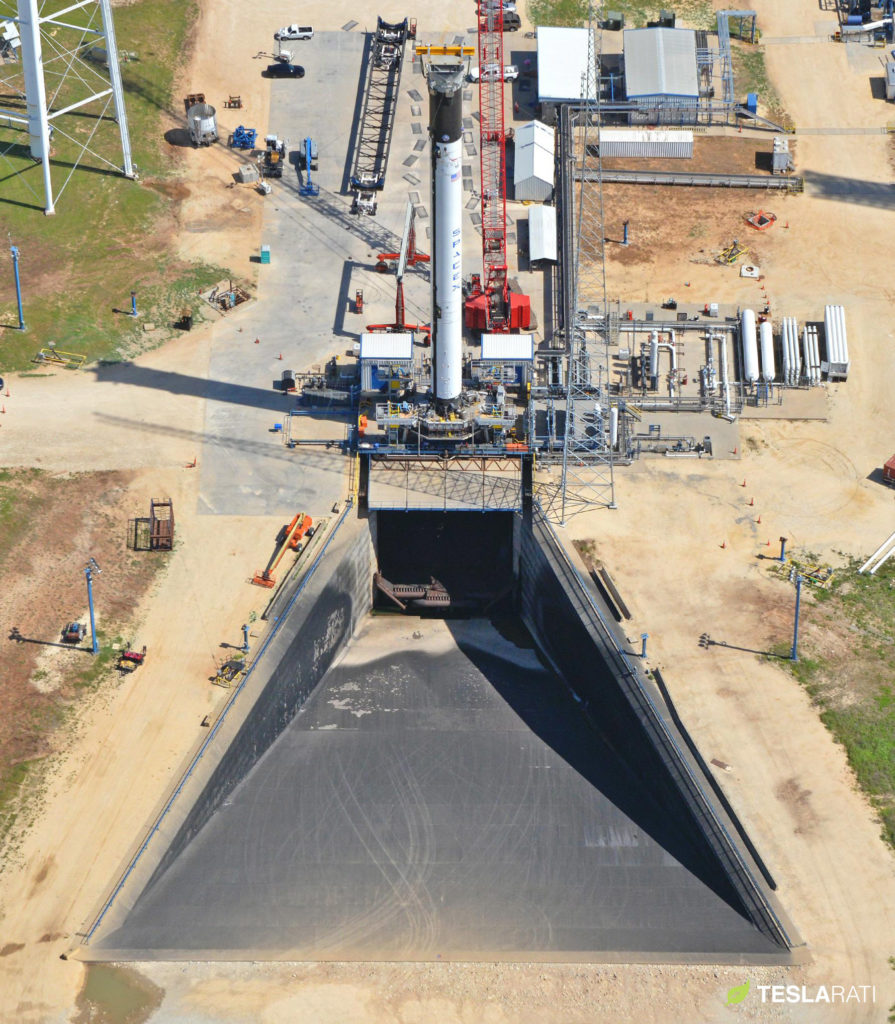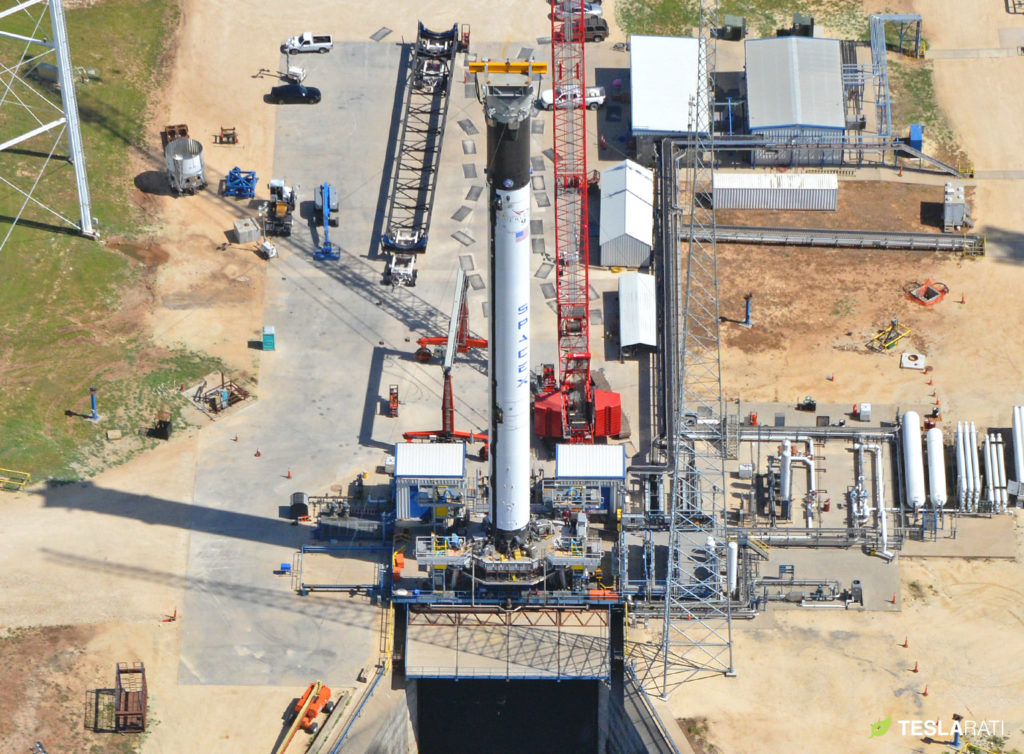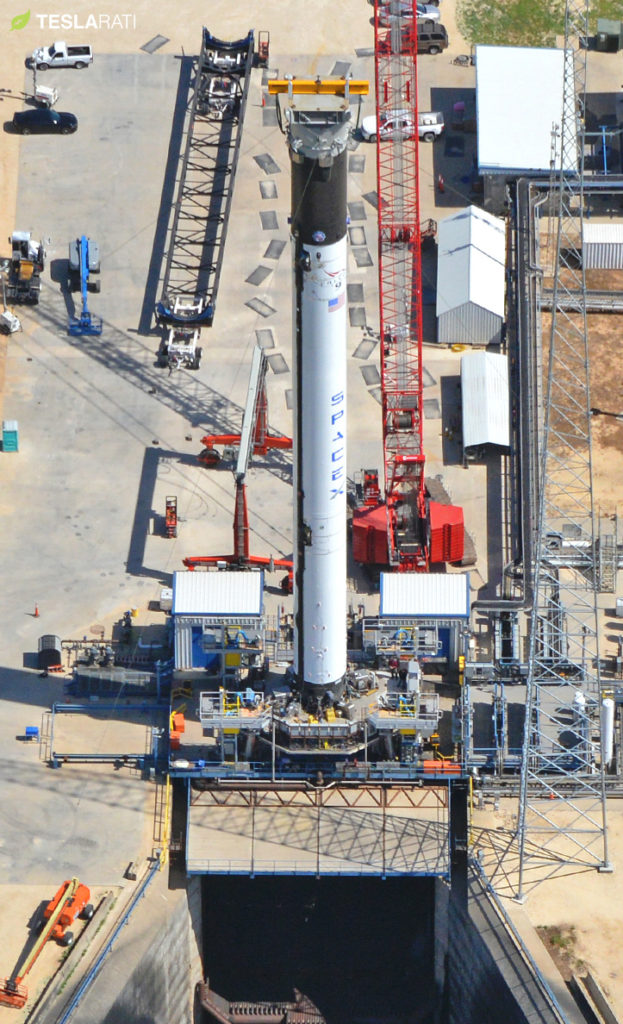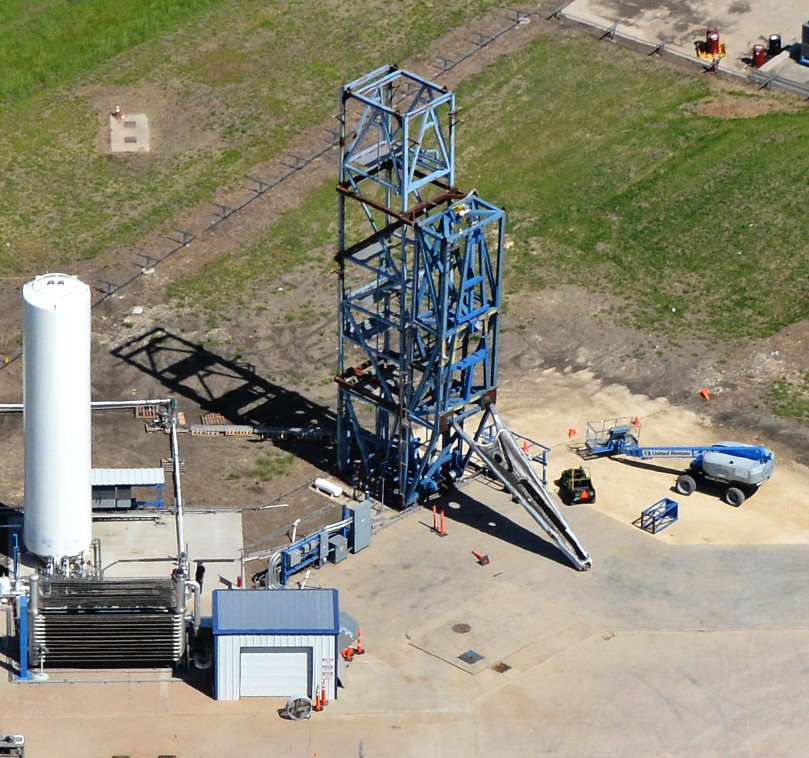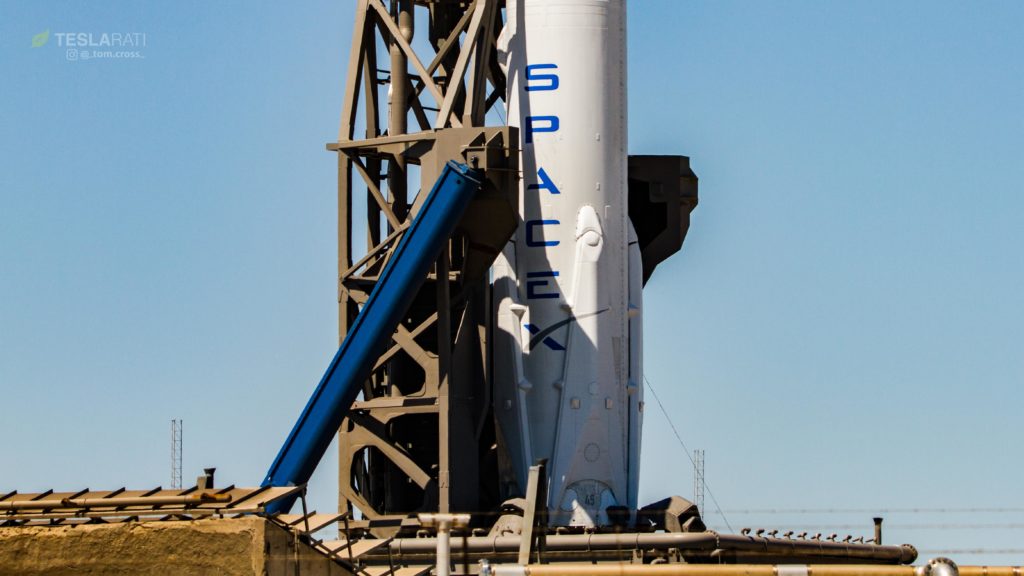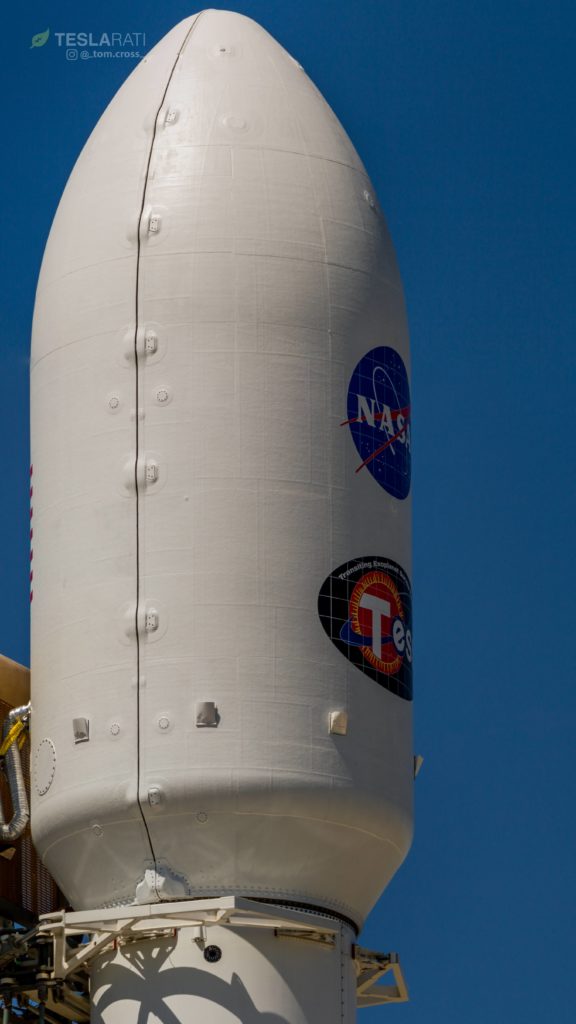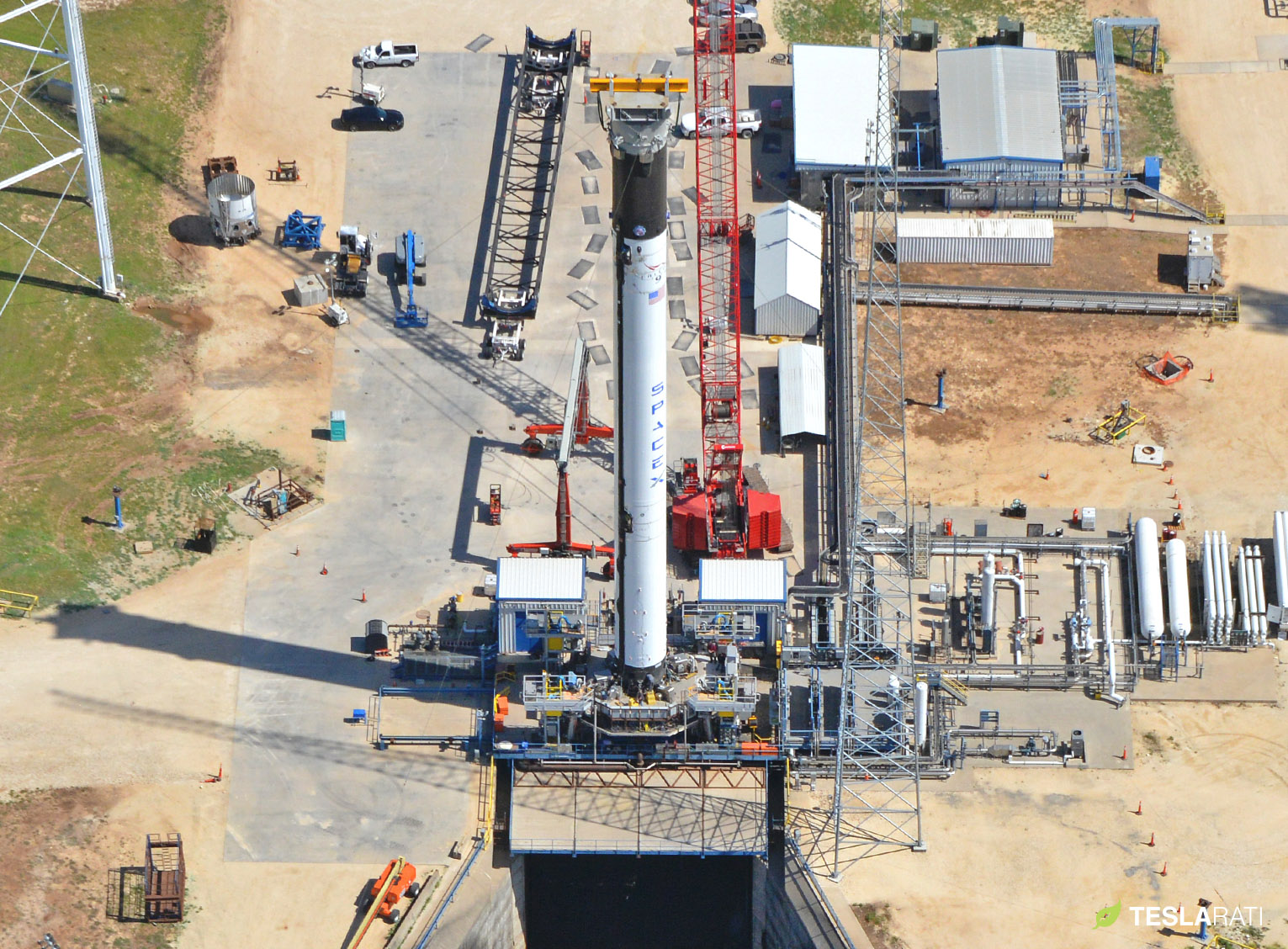
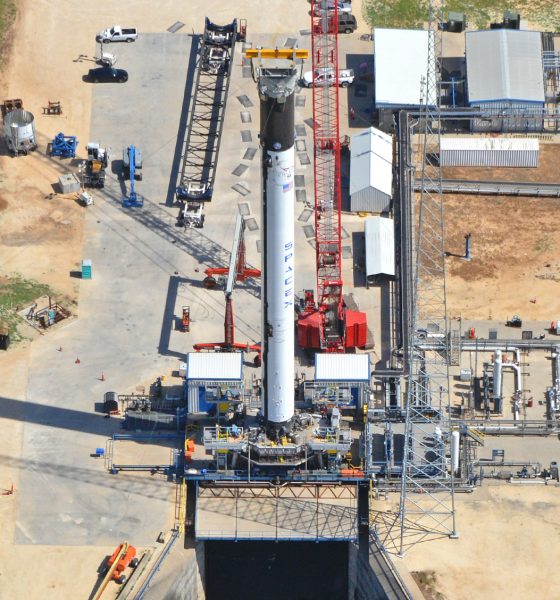
News
Second SpaceX Block 5 rocket spied in Texas, solidifying May 4 debut
Following reports from SpaceX’s Hans Koenigsmann that the company’s newest Falcon 9 Block 5 soared through its first hot-fire testing faster than any of the rocket’s previous upgrades, the second Block 5 booster has been spotted vertical, prepping for its own round of static-fire testing in McGregor, Texas.
After a thorough period of tests for the first Block 5 booster B1046, spotted partway through by NASASpaceflight’s forum member Gary Blair (ScaryDare), the presence of what can only be B1047 backs up Hans’ comments beyond a shadow of doubt. B1046 is now understood to be awaiting its inaugural on-pad static fire and launch at SpaceX’s Pad 39A, currently scheduled for NET May 4. While not entirely clear at this point, B1047 will most likely return to California after its test campaign in Texas, supplying SpaceX’s Vandenberg AFB launch site with a highly reusable booster.
- SpaceX’s second Block 5 booster was spotted vertical at the company’s McGregor, TX testing facilities. That booster has since been shipped to Florida for a mid-July launch, with B1048 now in its place as of June 15. (Aero Photo)
- SpaceX’s second Falcon 9 Block 5 booster was spied by an aerial photographer in Texas, April 17. (Aero Photo)
- B1047 captured testing in McGregor, Texas, April 2018. (Teslarati/Aero Photo)
If flight-testing shows that Block 5 is as easily and rapidly reusable as SpaceX engineers and techs intended, it’s entirely possible that B1047 will become the de facto Falcon 9 booster for most – if not all – upcoming VAFB missions, at least until additional boosters are completed, tested, and readied for flight operations. In a sense, SpaceX could be just weeks away from orbital rocket activities that all but mirror the sort of attitudes given towards modern aircraft, where one or several aircraft services contain specific routes and airports – or orbits and launch pads, in the case of Falcon 9.
In the history of reusable launch vehicles, the Space Shuttle is the only example that ever came close to the sort of regular reflights promised by Block 5 (and apparently even Block 4). If all goes as planned, the booster that launched TESS (B1045) will complete its second mission as early as June 28, requiring refurbishment in as few as 72 days, well over twice as fast as most previous reflights. Around the program’s cadence peak in the 1980s, Space Shuttle Atlantis flew two orbital missions in 54 days, and Falcon 9 Block 4 was by no means designed for rapid or repeated reuse and refurbishment.
- The same April 2018 flight captured what appears to be a Block 5 landing leg undergoing testing at a specially-designed test stand. (Aero Photo)
- Block 5 landing legs will be capable of retracting, much more efficient than the current process of removing each leg individually once boosters are returned to land or their port. They can be expected to look very similar to Block 4 legs shown here, albeit all black.(Tom Cross)
- SpaceX engineers and technicians have begun an aggressive campaign hoping to recover and reuse fairings ASAP. (Tom Cross)
If Block 5 becomes twice as reusable as Block 4, it will effectively usher in a new era of orbital access – Falcon 9’s booster accounts for over 70% of the rocket’s entire cost, and the payload fairing (~10%) is well on its way to recovery and reuse. Before the introduction of the fully-reusable BFR spaceship and booster, CEO Elon Musk recently confirmed that SpaceX will attempt to recover Falcon 9’s second stage, the only other critical component of the rocket that is now expended outright, mission permitting.
https://www.instagram.com/p/BhoeF43lxoX/?taken-by=erikkuna
Follow us for live updates, behind-the-scenes sneak peeks, and a sea of beautiful photos from our East and West coast photographers.
Teslarati – Instagram – Twitter
Tom Cross – Twitter
Pauline Acalin – Twitter
Eric Ralph – Twitter

News
Another Tesla Model 3 variant sold out for January 2026 in China
A look at Tesla China’s order page shows that new Model 3 LR RWD orders now have an estimated delivery date of February 2026.
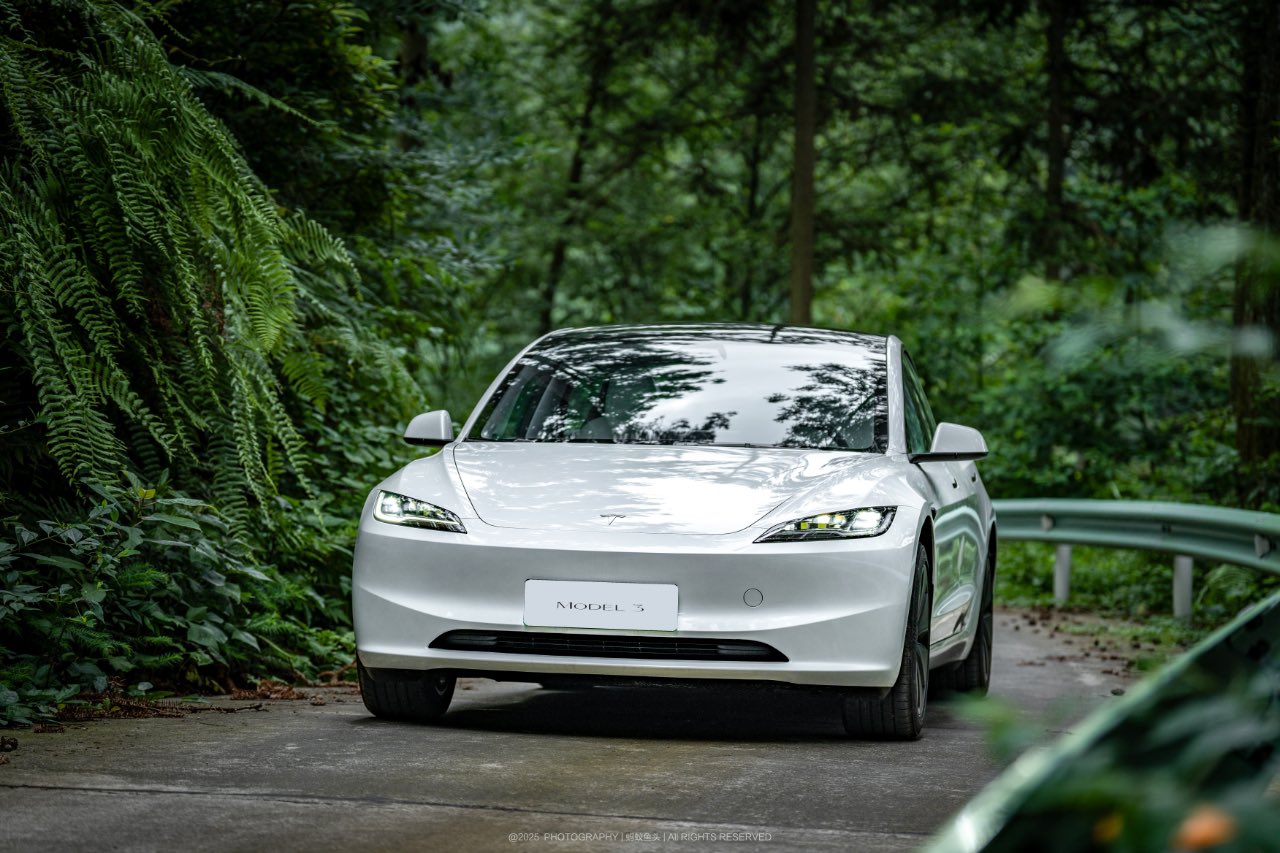
Another Tesla Model 3 variant in China appears to have sold out for January 2026, with the vehicle now showing an estimated delivery date of February 2026 for new orders. This bodes well for the all-electric sedan, which has maintained notable sales despite more affordable rivals like the Xiaomi SU7 and its crossover sibling, the Model Y.
Model 3 LR RWD joins February 2026 queue
A look at Tesla China’s order page for the all-electric sedan shows that new Model 3 Long Range Rear Wheel Drive orders now have an estimated delivery date of February 2026. Priced from RMB 259,500 ($36,810), the LR RWD sits as the second-lowest-priced trim in Tesla China’s four-variant Model 3 lineup. The move follows a similar delivery timeframe for the Model 3 Performance, which remains the most expensive option for the vehicle, as noted in a CNEV Post report.
The estimated delivery dates of the two remaining Model 3 variants remain unchanged for now. The base RWD version, starting at RMB 235,500, and the LR AWD variant, priced from RMB 285,500, both continue to list estimated delivery times of 4-6 weeks. Tesla China, for its part, has continued to list in-stock Model 3 vehicles and is actively encouraging buyers to select inventory units for delivery before the end of the year.
Model Y delays and policy shifts
Delivery timelines for the Model Y in China are also stretching into 2026. All customized Model Y variants now show February 2026 as their estimated delivery date, except for the entry-level version, which still lists January 2026. Tesla has been urging customers since November to prioritize purchasing inventory vehicles, a push aimed at maximizing year-end deliveries.
Timing matters for Chinese buyers due to upcoming changes in government incentives. China’s new energy vehicle purchase tax exemption will be scaled back in 2026, which means customers who take delivery next year could face higher tax costs compared to those who are able to receive vehicles before the end of the year.
As per data from the China Passenger Car Association, Tesla recorded retail sales of 73,145 vehicles in November, down 0.47% year over year. From January through November, Tesla’s retail sales in China totaled 531,855 units, a 7.37% year-over-year drop.
News
Wedbush’s Dan Ives sees ‘monster year’ ahead for Tesla amid AI push
In a post on X, the analyst stated that the electric vehicle maker could hit a $3 trillion market cap by the end of 2026 in a bullish scenario.

Wedbush analyst Dan Ives is doubling down on Tesla’s (NASDAQ:TSLA) long-term upside. In a post on X, the analyst stated that the electric vehicle maker could hit a $3 trillion market cap by the end of 2026 in a bullish scenario, thanks to the company’s efforts to develop and push its artificial intelligence programs.
An aggressive valuation upside
Ives, Wedbush’s global head of tech research, stated in his post that Tesla is entering a pivotal period as its autonomy and robotics ambitions move closer to commercialization. He expects Tesla’s market cap to reach $2 trillion in 2026, representing roughly 33% upside from current levels, with a bull case up to a $3 trillion market cap by year-end.
Overall, Ives noted that 2026 could become a “monster year” for TSLA. “Heading into 2026, this marks a monster year ahead for Tesla/Musk as the autonomous and robotics chapter begins. We believe Tesla hits a $2 trillion market cap in 2026 and in a bull case scenario $3 trillion by end of 2026… as the AI chapter takes hold at TSLA,” the analyst wrote.
Ives also reiterated his “Outperform” rating on TSLA stock, as well as his $600 per share price target.
Unsupervised Full-Self Driving tests
Fueling optimism is Tesla’s recent autonomous vehicle testing in Austin, Texas. Over the weekend, at least two Tesla Model Ys were spotted driving on public roads without a safety monitor or any other occupants. CEO Elon Musk later confirmed the footage of one of the vehicles on X, writing in a post that “testing is underway with no occupant in the car.”
It remains unclear whether the vehicle was supported by chase cars or remote monitoring, and Tesla has not disclosed how many vehicles are involved. That being said, Elon Musk stated a week ago that Tesla would be removing its Safety Monitors from its vehicles “within the next three weeks.” Based on the driverless vehicles’ sightings so far, it appears that Musk’s estimate may be right on the mark, at least for now.
News
Production-ready Tesla Cybercab hits showroom floor in San Jose
Tesla has implemented subtle but significant updates to both the Cybercab’s exterior and interior elements.
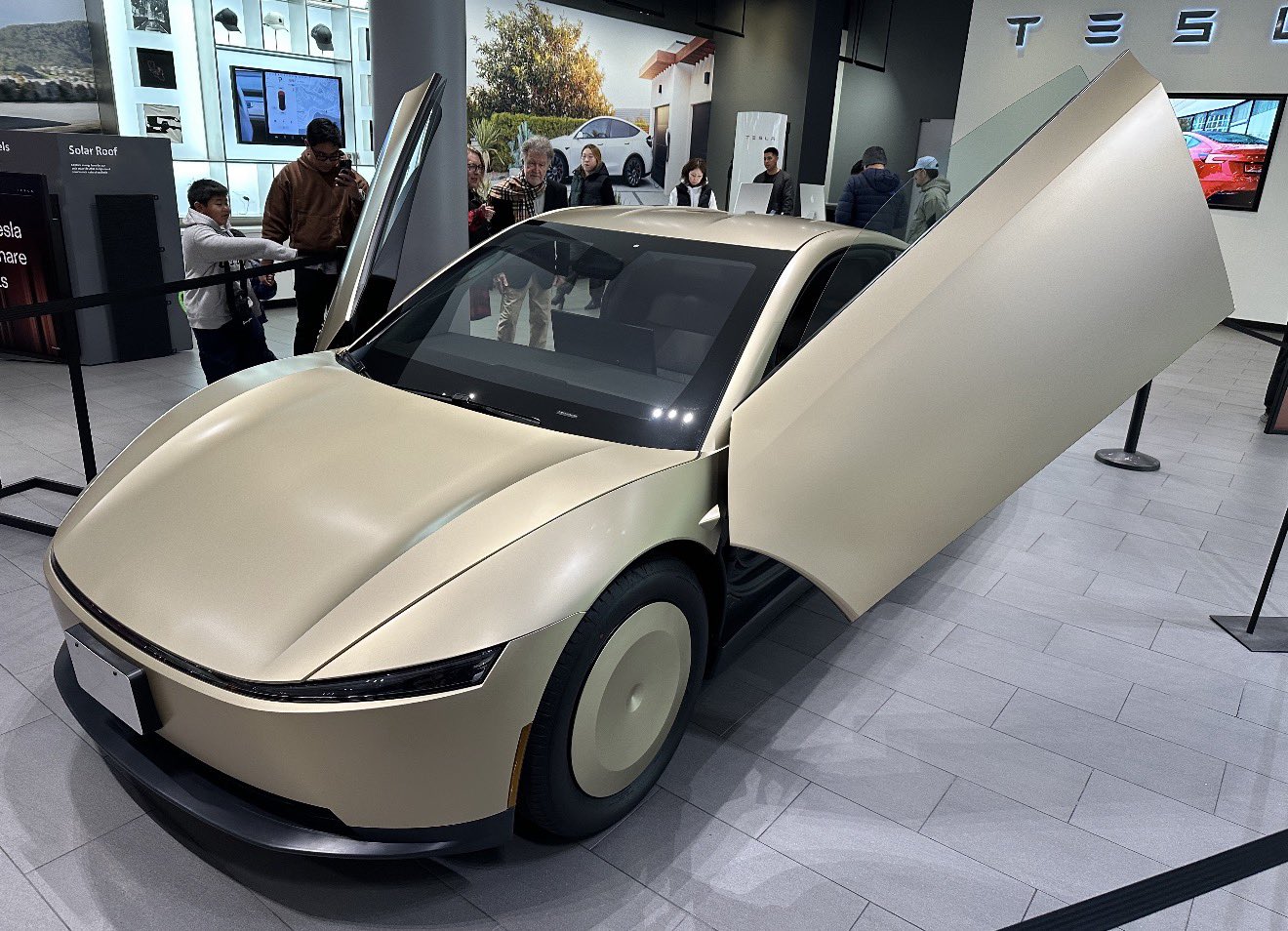
Tesla has showcased what appears to be a near-production-ready Cybercab at its Santana Row showroom in San Jose, California, giving visitors the closest look yet at the autonomous two-seater’s refined design.
Based on photos of the near-production-ready vehicle, the electric vehicle maker has implemented subtle but significant updates to both the Cybercab’s exterior and interior elements, making the vehicle look more polished and seemingly more comfortable than its prototypes from last year.
Exterior and interior refinements
The updated Cybercab, whose photos were initially shared by Tesla advocate Nic Cruz Patane, now features a new frameless window design, an extended bottom splitter on the front bumper, and a slightly updated rear hatch. It also includes a production-spec front lightbar with integrated headlights, new wheel covers, and a license plate bracket.
Notably, the vehicle now has two windshield wipers instead of the prototype’s single unit, along with powered door struts, seemingly for smoother opening of its butterfly doors. Inside, the Cybercab now sports what appears to be a redesigned dash and door panels, updated carpet material, and slightly refined seat cushions with new center cupholders. Its legroom seems to have gotten slightly larger as well.
Cybercab sightings
Sightings of the updated Cybercab have been abundant in recent months. At the end of October, the Tesla AI team teased some of the autonomous two-seater’s updates after it showed a photo of the vehicle being driven through an In-N-Out drive-through by employees in Halloween costumes. The photos of the Cybercab were fun, but they were significant, with longtime Tesla watchers noting that the company has a tradition of driving its prototypes through the fast food chain’s drive-throughs.
Even at the time, Tesla enthusiasts noticed that the Cybercab had received some design changes, such as segmented DRLs and headlamps, actual turn signals, and a splitter that’s a lot sharper. Larger door openings, which now seem to have been teasing the vehicle’s updated cabin, were also observed at the time.
